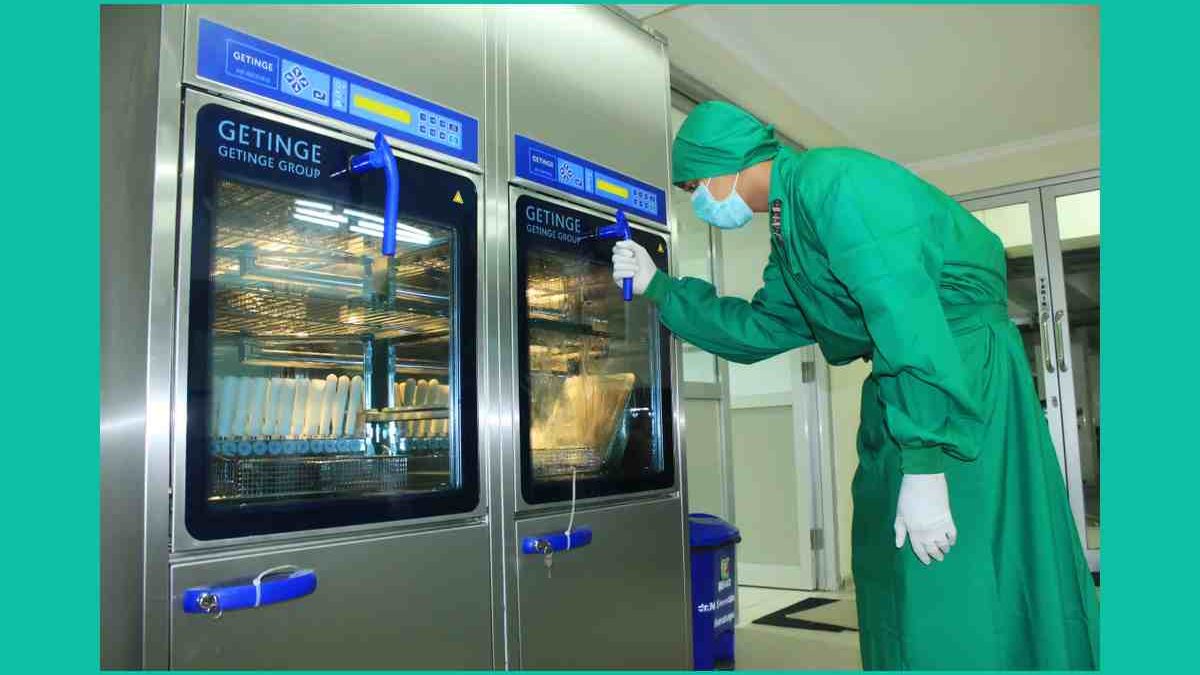This comprehensive guide is designed to provide you with a detailed understanding of the five essential features to look for when selecting an autoclave machine for hospital use.
In the dynamic and fast-paced environment of a hospital, ensuring impeccable hygiene and safety is paramount. An autoclave machine serves as a crucial ally in this endeavor, facilitating the sterilization of medical equipment and instruments to safeguard both patients and healthcare providers.
Table of Contents
Autoclave machine for hospital use: 5 features that make everyday use easier
-
Fast and efficient sterilization process
In the fast-paced world of healthcare, time is often of the essence. An autoclave machine that offers a rapid and efficient sterilization process is a game-changer for hospitals. Look for models that boast a short cycle time without compromising the thoroughness of the sterilization process. Modern autoclaves utilize innovative technologies, such as powerful vacuum pumps to completely remove the air from their chamber to ensure that instruments are effectively sterilized in a fraction of the time compared to conventional methods. Compared to gravity displacement, this makes vacuum autoclaves not only faster but also able to treat more complex loads, such as porous and textile-based medical items.
Thanks to vacuum cycles, autoclave machines enhance overall workflow efficiency in hospitals but also allow for a higher turnover of instruments, reducing the risk of shortages during critical moments in operating theaters.
-
Adequate chamber capacity
The capacity of the autoclave chamber directly impacts the volume of instruments that can be sterilized in each cycle. When selecting an autoclave machine for your hospital, consider the size of the chamber in relation to your facility’s needs. A larger chamber provides greater flexibility, accommodating a diverse range of instruments and load sizes. Whether you’re sterilizing a small batch of delicate instruments or a large volume of surgical tools, having an autoclave with adequate chamber capacity ensures that your sterilization processes remain streamlined and efficient.
For example, medium-sized autoclaves can be ideal for onsite use at operating theaters.
Autoclave machine for hospital use
-
Precise temperature and pressure controls
Effective sterilization hinges on maintaining precise temperature and pressure levels throughout the entire cycle. Look for an autoclave machine that offers customizable settings, allowing you to fine-tune the sterilization process based on the specific requirements of your hospital. Some autoclaves even allow medical staff to custom design up to 20 different sterilization cycles, but also offer preset options.
With advanced digital controls and programmable features, modern autoclaves empower healthcare professionals to tailor each cycle, ensuring that a wide array of instruments, from delicate optics to robust surgical tools, receive the appropriate sterilization treatment.
-
Comprehensive safety features
Safety is non-negotiable in a hospital environment. When choosing an autoclave, prioritize models that come equipped with comprehensive safety features. Automatic door locking mechanisms ensure that the chamber remains sealed during the sterilization process, preventing accidental exposure to high temperatures and steam. This is one of the main features present in Celitron’s autoclave machines for hospitals.
Pressure relief valves and overheat protection mechanisms provide an additional layer of security, mitigating the risk of equipment malfunction or hazardous incidents. By opting for an autoclave with robust safety features, you prioritize the well-being of your staff and patients.
-
User-friendly interface and data logging
Navigating complex sterilization processes should be straightforward. Look for an autoclave machine with a user-friendly interface that simplifies operation and minimizes the likelihood of errors. Intuitive digital displays, clear indicators, and easily accessible controls contribute to a seamless user experience. Additionally, consider models that offer data logging capabilities, such as the option for a PC connection. The ability to monitor and track sterilization cycles over time not only ensures compliance with regulatory standards but also provides valuable insights into the machine’s performance, facilitating proactive maintenance and optimization. Self and remote diagnosis features are also a great help in ensuring you can operate your autoclave machine for long-term use in your hospital.
Autoclave machine for hospital use

